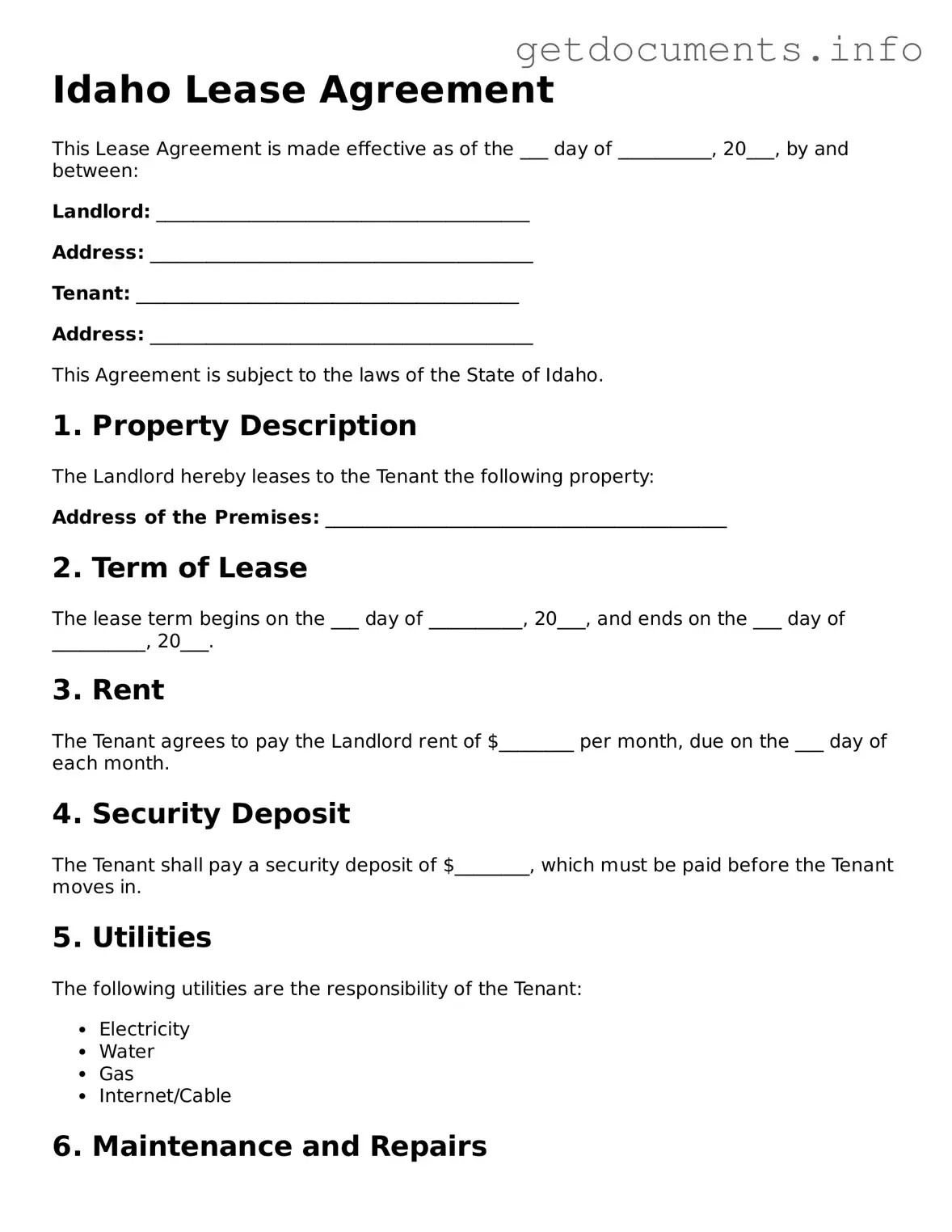Free Lease Agreement Template for Idaho
The Idaho Lease Agreement form is a legally binding document that outlines the terms and conditions under which one party rents property from another. This form serves to protect the rights of both landlords and tenants, ensuring clarity in the rental relationship. Understanding this form is essential for anyone involved in leasing property in Idaho, so take the next step and fill out the form by clicking the button below.
Access Lease Agreement Editor
